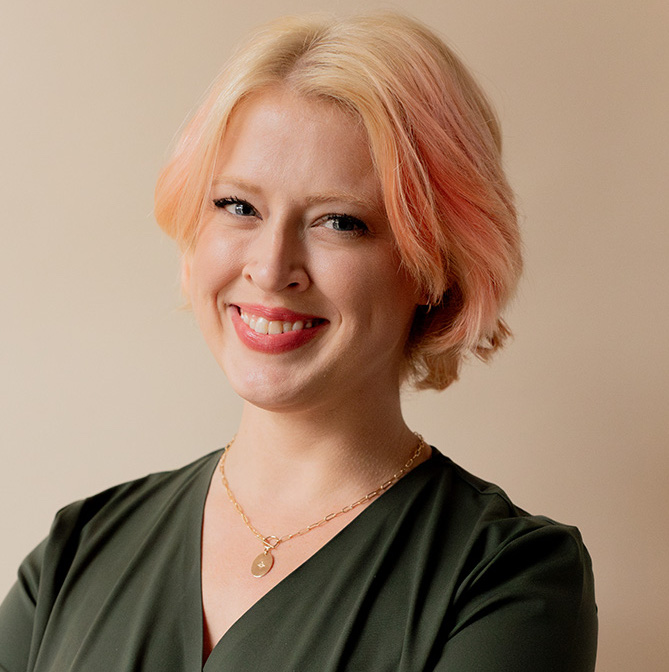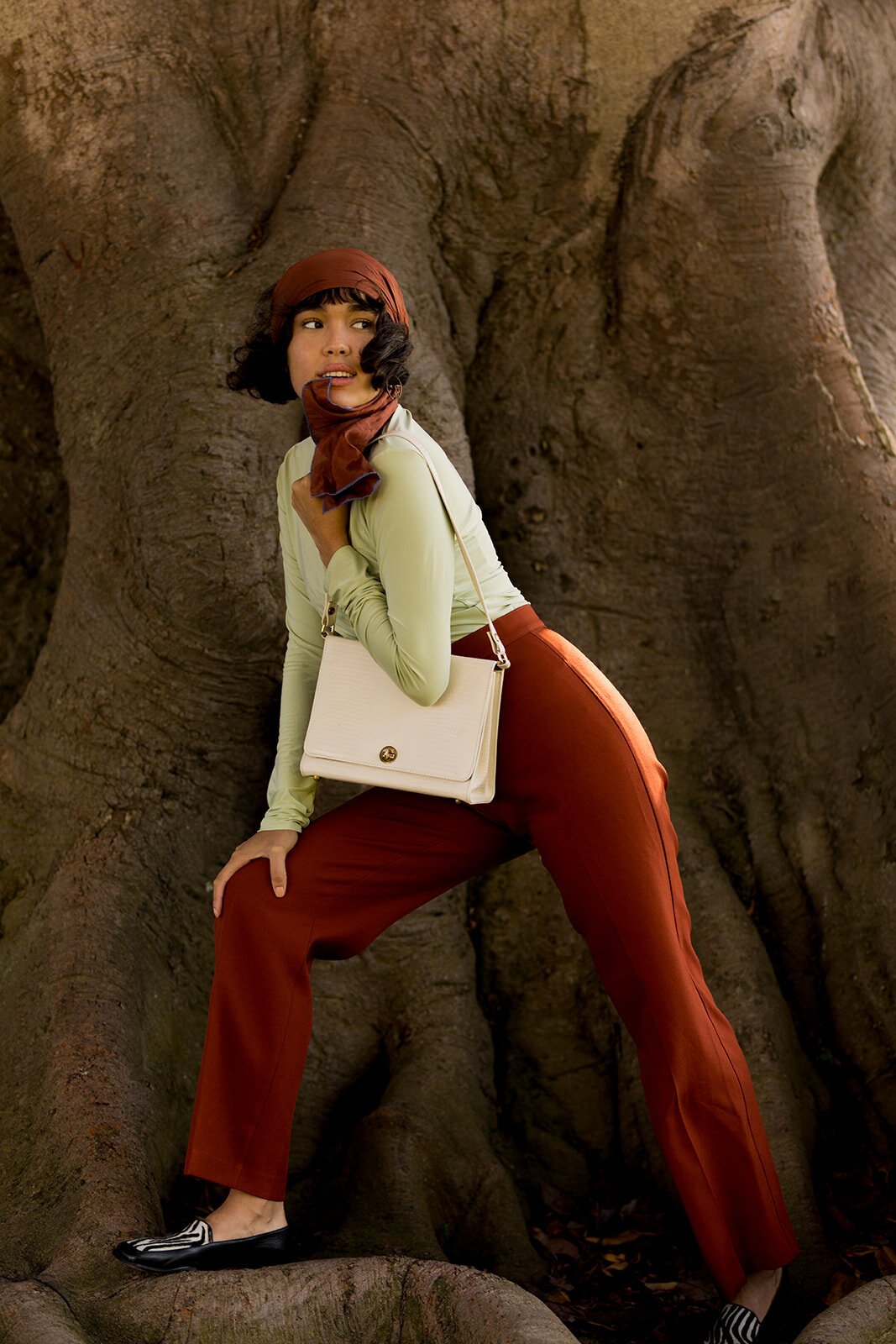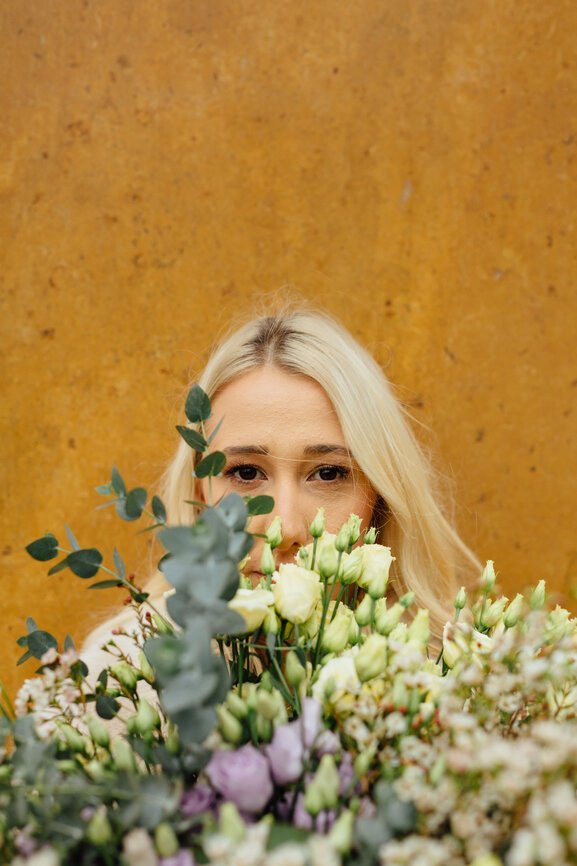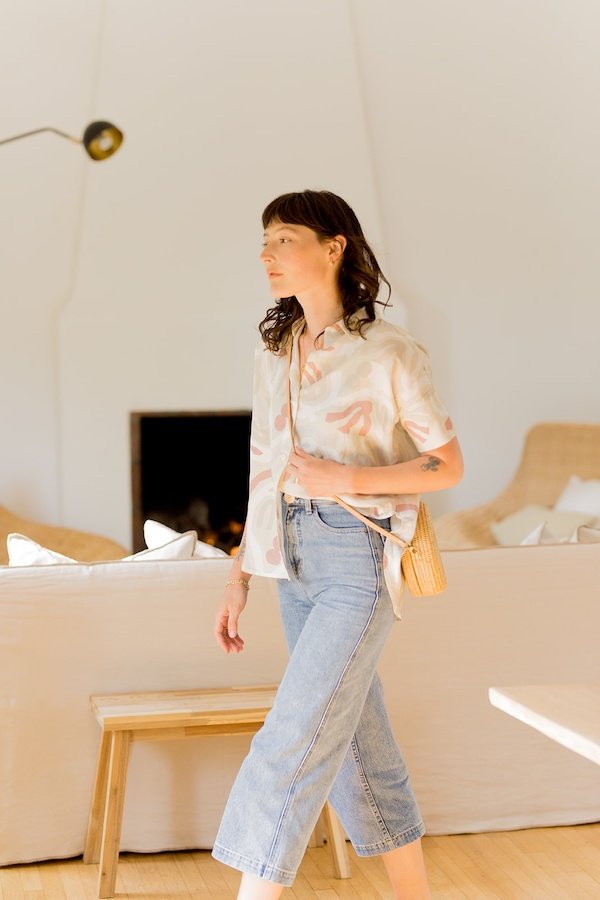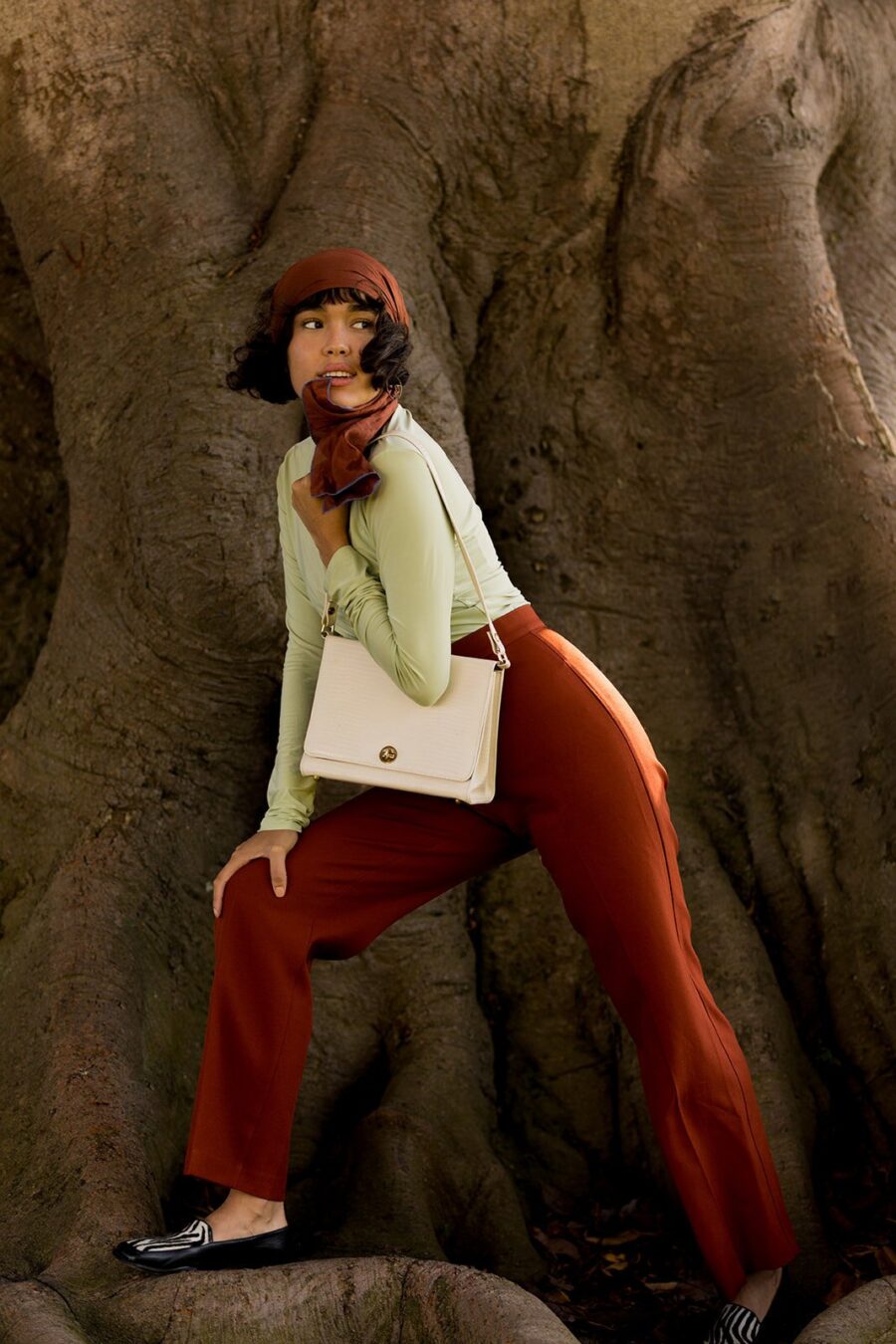
How To Be A Sustainable Maximalist
Less is more…or more is more?
I moved across the country to Los Angeles as a self-proclaimed “minimalist.” But gradually, that label began to wear on me; my sparse apartment decorated in blues and greys wasn’t bringing me the joy I had hoped. Instead, I discovered I’m more inspired when surrounded by color and items that delight me. So I swapped the white paint in my tiny apartment for shades of what other people call “my husband would never let me do that”: pink walls, yellow curtains, and technicolor rugs. It looks like a gumball machine, and even though it has a small footprint, it takes up a lot of space in my heart.
“I’m moving with a mindset of abundance, not scarcity, and my decor reflects it.”
Now I’m on the cusp of another move, which means I’m sorting through my belongings and picking up a few new items, too. Yet, rather than leaning into a minimalist aesthetic like the first go-around, I’m bucking the neutrals in favor of more pink walls—and green and yellow ones, too. I’m moving with a mindset of abundance, not scarcity, and my decor reflects it. Instead of fearfully clinging to minimalist blues and greys (the “don’t rock the boat” colors of my youth), I’m embracing the truth I’ve always known deep down: I am a maximalist.
What is maximalism?
While you might think maximalism means a giant house or an overflowing wallet, it’s important to note that it isn’t just a synonym for excess. And you can be a maximalist without falling into the ecological trap of overconsumption. Instead, maximalism is an aesthetic of excess that explores vibrancy, lushness, and creativity. It embraces the strange, or the unique, and celebrates the idea that no one else would pair these items quite like you do.
Where minimalism quiets your surroundings with a rhythmic hum, maximalism is music bouncing off of every wall, tumbling through corridors and spilling out into the sunshine. There is calm and joy in both—and it only depends on which music you prefer to dance to.
“Maximalism is an aesthetic of excess that explores vibrancy, lushness, and creativity.”
You don’t have to buy out Anthropologie or Urban Outfitters to get there, though. Like its counterpart minimalism, maximalism cannot be purchased outright. Both can prioritize working with what you already have and being mindful about what and how you acquire things for your home or wardrobe.
Here’s how I try to maximize my color while still keeping my eye on sustainability.
Find your spark.
For years, I attempted to decorate my home and fill my wardrobe with things I thought I “should” own. This stemmed from the (wrong) idea that a specific minimalist aesthetic could improve my life, which I had read in books, blogs, and heard on podcasts. That meant muted colors, plenty of neutrals, and slacks. Slacks. I was not happy.
Over time, I started to get my groove back. When I examined what young Emily was drawn to, it included elaborate thrifted costumes, pink iPods, and lots (and lots, heh) of Beanie Babies. I adored sequins and stickers, DIY dresses modeled after my favorite movies, and making magazine cut-out collages for every square inch of my college dorm room walls. It was always chaos, but with the constraints of time, space, and money.
These days, I am still drawn to these items, and also things that make me laugh. Shirts covered in license plates, abstract paintings that look like rabbit faces, twinkle lights shaped like Peeps; they all bring a smile to my face each time I see them. That’s how I decide what gets to come into my home, and what doesn’t: Does it make me laugh?
“Look at what you already own and start drawing connections between how your favorite things make you feel.”
Of course, comedy is not going to be everyone’s goal for their home. I encourage you to find your spark—whether that’s items that evoke a sense of calm, or curiosity, or creativity. Maybe you want to fill your playlist with eclectic and nonsensical musical combinations. Or maybe you want to turn your home into a pensive library full of towers of secondhand books. These things are maximalism, too (what I’m saying is, you don’t have to paint everything pink).
To find this measurement for yourself, look at what you already own and start drawing connections between how your favorite things make you feel. Then when you’re online or in a store, you have a better sense of how a product’s energy will contribute to the space. For me, that means no more stock-colored appliances. Hi, red stand mixer and pink SodaStream!
Work with what you have.
After you’ve decided on a loose rule for what you’re going to add to your style, take inventory of what you already have. Sustainable living doesn’t require drab surroundings; it’s about lowering your consumption and increasing your reliance (and enjoyment) on the things you already own. And if you can maximize your joy without maxing out your credit card, I promise you’ll feel rich, inspired, and abundant in every other way.
“The more new combinations and configurations I discover, the more I realize how abundant my life already is.”
This is how you’ll find me rearranging the furniture when I’m feeling stagnated or don’t have the budget for new home goods. The more new combinations and configurations I discover, the more I realize how abundant my life already is. (More is more, after all.)
We can get so used to seeing the same item year after year in a specific spot that it can seem easiest just to donate it once we’ve grown tired of it. Instead, move it to a different place in your home, or use it for a different purpose. That’s how I ended up using a closet rod as a plant hanger or a favorite broken coffee mug as a pen holder. Skip decorating “on a budget”—give me free instead!
Say yes to the items that cross your path.
Because I love the feeling of abundance (and fear scarcity, don’t we all), I’m often saying yes—to friends who want to give me the clothes they’re donating, to free samples, or to secondhand sidewalk furniture.
While this is a fast-track towards a cluttered life, this is also how I’ve found some of my very favorite items! The best pen I’ve ever used is a promotional ballpoint from a whiskey brand I’ve never tried.
“With time, you’ll grow more familiar with the concessions you’re willing to make and those you aren’t.”
If you have the discipline to cull through the things that don’t speak to you and the proper channels for recycling and donating items, then accept things that otherwise might not get a home. (Keep in mind that there could be other people who would use and love the item more than you though—don’t let that scarcity mindset prevent you from being mindful and generous!)
I also consider the pros and cons of finding an item on sale that is not quite what I envisioned. If it sparks intrigue, I’ll readjust my expectations and purchase it with a promise I’ll make it work. This doesn’t always work and is a careful tip-toe around buying “just to buy” and investing in something thoughtfully. But with time, you’ll grow more familiar with the concessions you’re willing to make and those you aren’t. (For me, I love a good scratch-and-dent version of any furniture I like.)
Be true to you.
Toss every expectation that anyone else has ever burdened you with, and start building your own standards—you are the captain of your hot pink gilded ship, after all.
“Toss every expectation that anyone else has ever burdened you with, and start building your own standards.”
I have conversations with my husband about what is “loud that we can live with,” and we’ve found that our limits…hardly exist. But when people second-guessed us about our pink apartment, we stuck to our decision because, after all, it was our space. We wanted to live in a space that felt authentic and joyful to us—a style that we could live with. Other people’s opinions need not apply.
This also connects to another maximalist tenet I’ve picked up along the way that maybe you’ll want to adopt (or maybe not). I don’t spend too much time worrying about what “goes together” because that allows me more freedom in purchasing items secondhand or finding them on the curb. If I have too strict or specific standards for something like a mixing bowl, I’ll likely end up purchasing it brand new. So go easy on yourself—you’ll find so many wonderful treasures that way.
I’ve also discovered that just by trusting my gut on what I hand-select for my home, the pieces usually come together anyway. My style is “if I like it, it matches” and that is what my maximalism looks like.
Take your time—and take care.
The most important part of balancing sustainability with maximalism is that it takes time and it takes care. You don’t become Iris Apfel overnight (although, can you imagine?), so there’s no need to rush it.
Make the discovery phase part of the process by perusing old bookstores and vintage shops, appreciating the lavish items you’ll never buy and cherishing the ones you do.
“Allow each piece to grow and develop its own story and character.”
And in a way, this is a different type of materialism—putting emphasis and maintenance into the items you hold dear so that you don’t have to replace them frequently. Allow each piece to grow and develop its own story and character. Part of what makes my home so joyful, in all its over-the-topness, is that I can tell you when and how I acquired each item—even if it was a Target purchase. I can likely tell you which Target I purchased it from, when, and how I felt that day.
From there, be sure to care and repair for items you don’t need to continue to purchase new. Patch your favorite denim, deep-clean that rug that just needs some TLC, or frame those “just because” cards you receive from loved ones.
Stuff can be sentimental, and that’s why minimalism didn’t work for me. And that’s also why maximalism does. I care deeply about the items I carry with me through my life and the energy they bring me, without letting them consume me or dictate where I’m going next. And that—that—is the key to sustainable maximalism. It’s okay to care for the things that delight you and support your life, but don’t let them stand in the way of you actually living it.
“You don’t have to have it all to be a maximalist; you just need to understand how to work with what you have.”
You don’t have to have it all to be a maximalist; you just need to understand how to work with what you have.
Cheers to whatever form—or color—your sustainable lifestyle takes.
RELATED READING
Emily Torres is the Editorial Director at The Good Trade. Born and raised in Indiana, she studied Creative Writing and Business at Indiana University. You can usually find her in her colorful Los Angeles apartment journaling, caring for her rabbits, or gaming.
